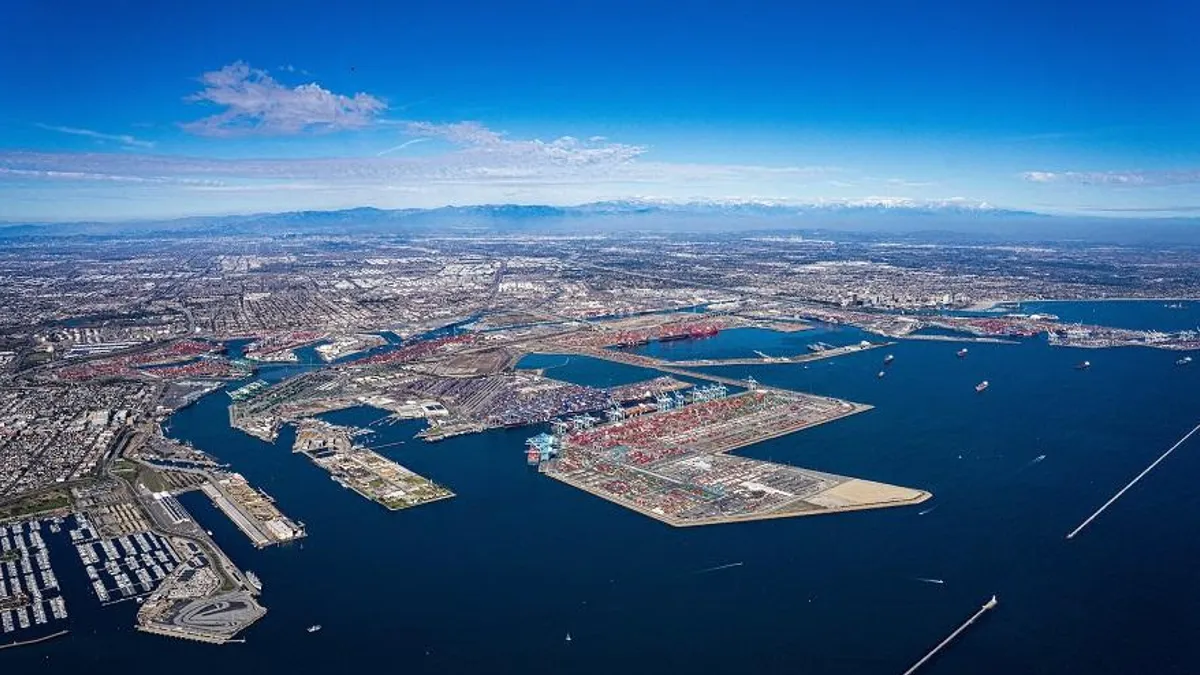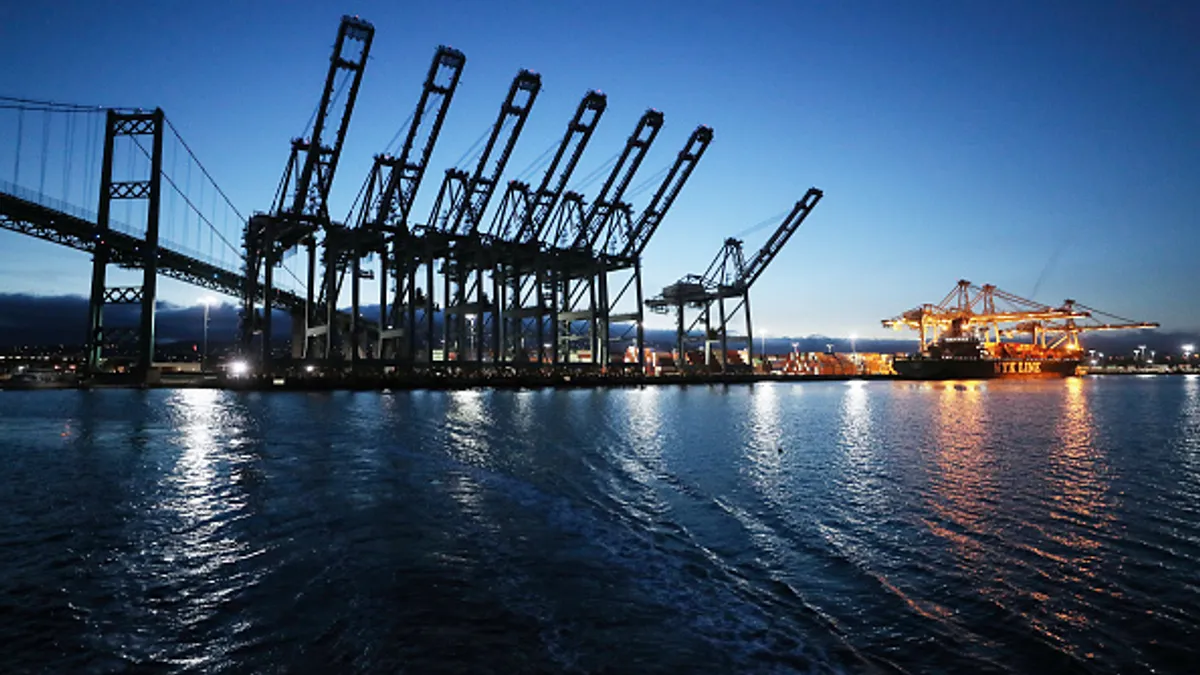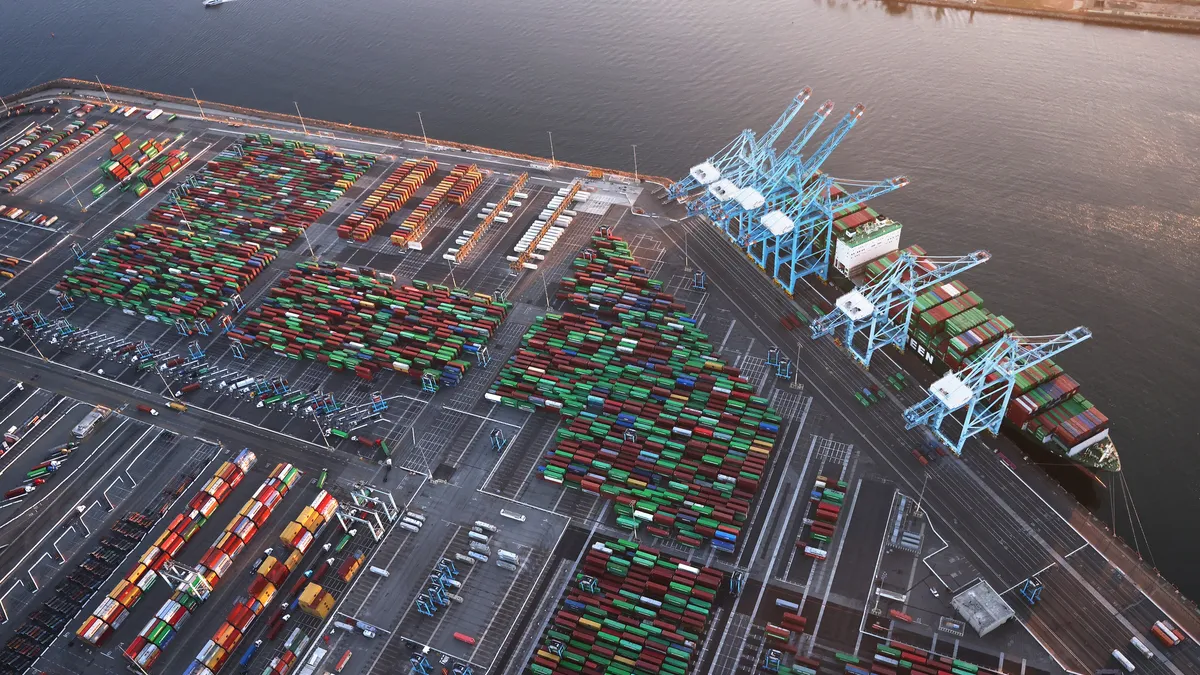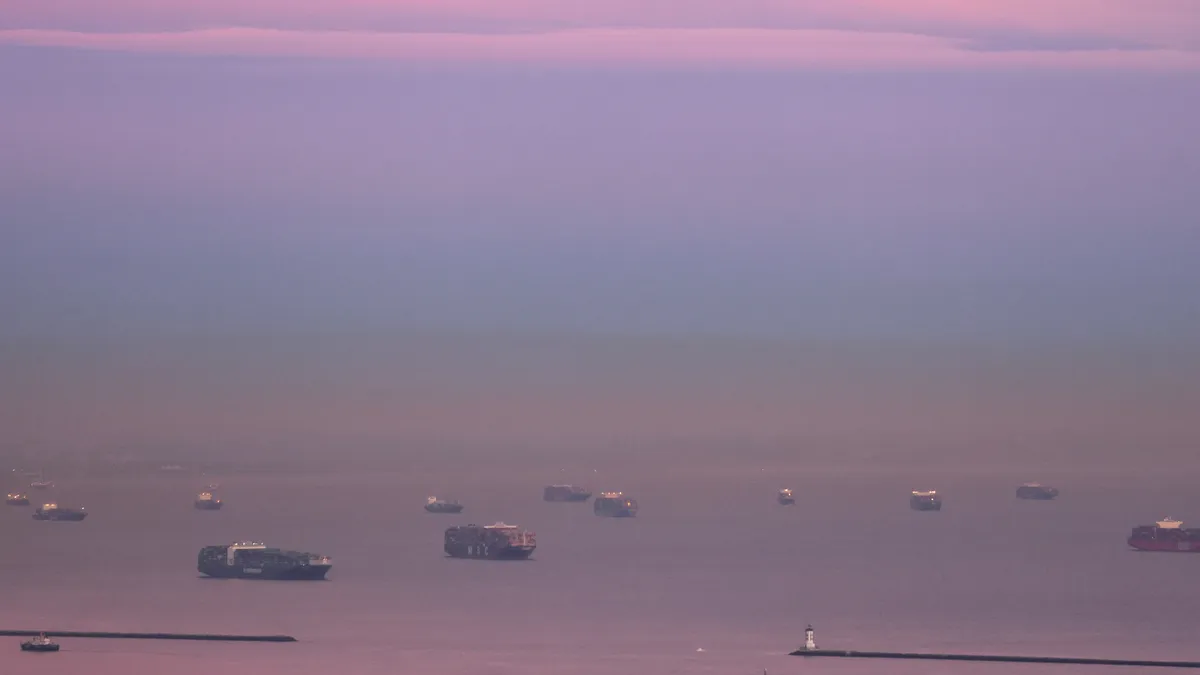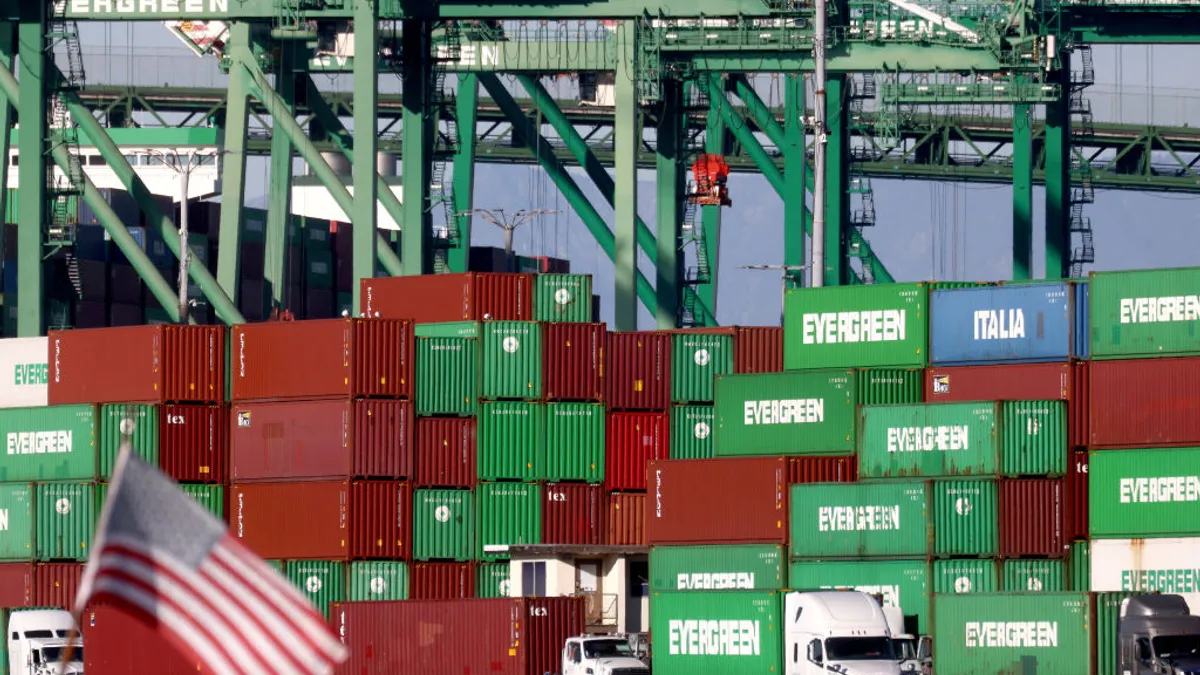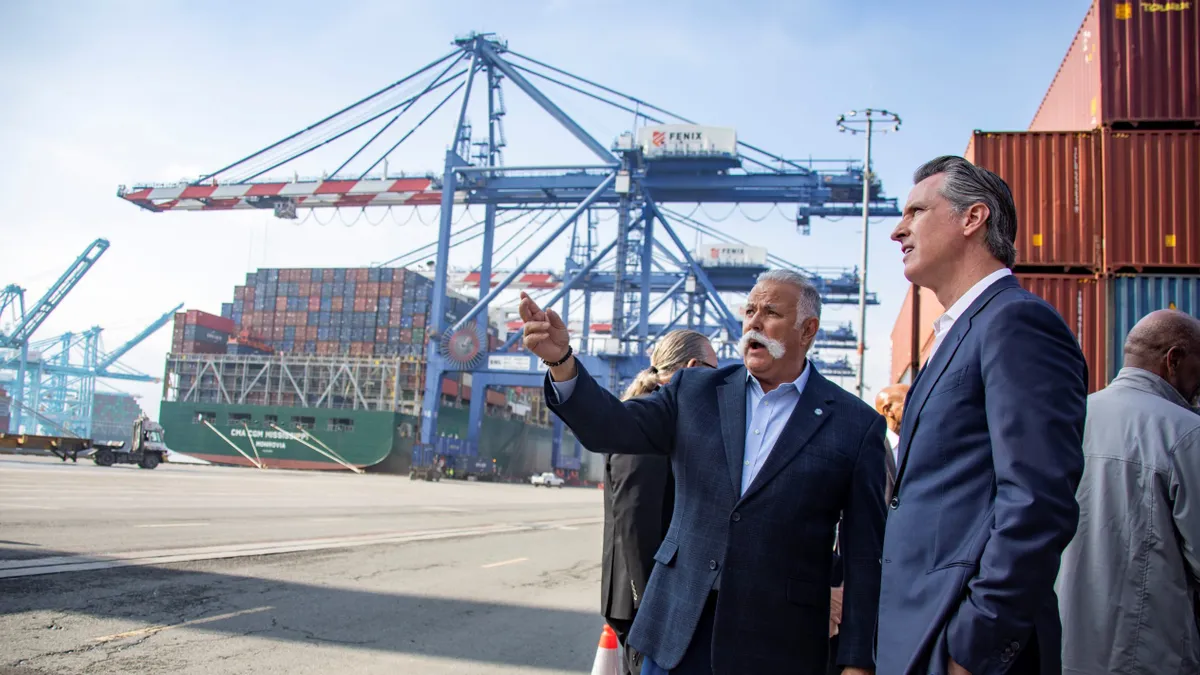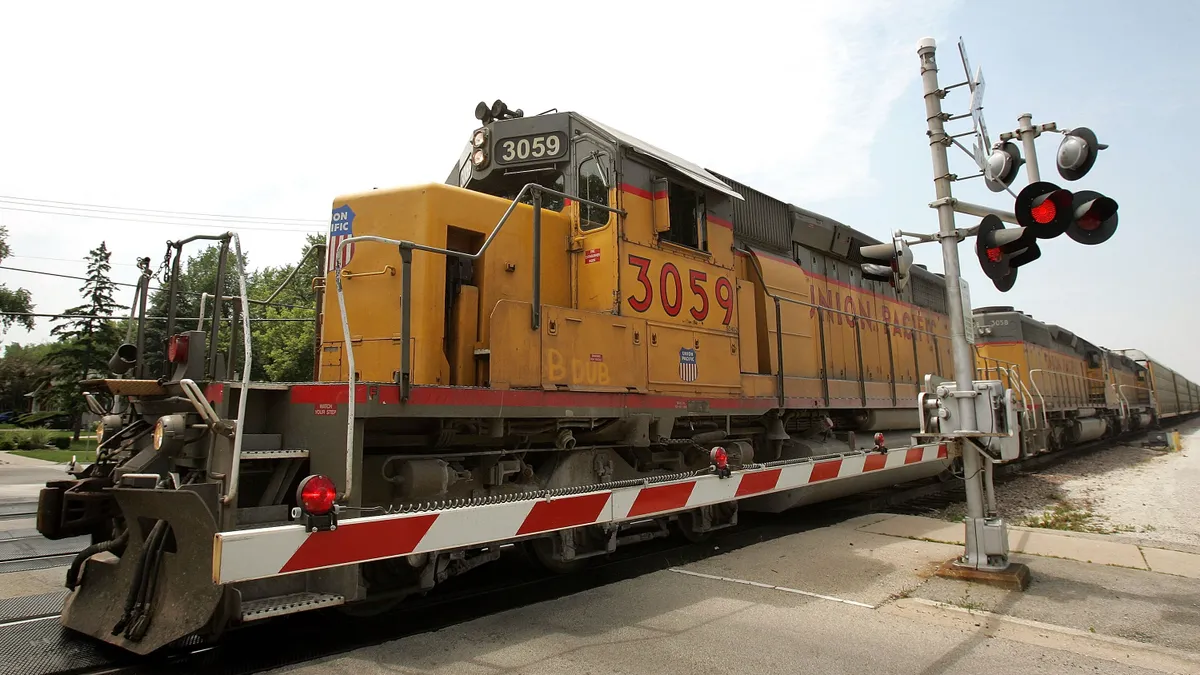UPDATE: Nov. 15, 2021: The ports of Los Angeles and Long Beach on Monday postponed the decision on when and whether to start the container dwell fees until Nov. 22, according to a joint press release.
The announcement was made after the ports saw a combined 26% decrease in "aging cargo" left on docks since the potential fee was unveiled on Oct. 25. "Postponing consideration of the fee provides more time, while keeping the focus on the results we need," Mario Cordero, executive director at the Port of Long Beach, said in the press release.
UPDATE: Nov. 1, 2021: The Los Angeles Harbor Commission and the Long Beach Harbor Commission on Friday ratified the ports' plans to charge ocean carriers fees for long-dwelling containers on marine terminals. The ports will begin charging the fees on Nov. 15, but may decide not to if congestion lessens before that date, according to the respective press releases.
Dive Brief:
- As they attempt to clear cargo, the Port of Los Angeles and Port of Long Beach will begin charging ocean carriers a $100 daily fee for each container that dwells at terminals longer than the allotted time, the ports said in a joint news release Tuesday.
- Ocean carriers will have to pay the ports' fee for each container that dwells nine days (if moving by truck) or three days (if moving by rail). The fee will rise by $100 for each additional day the box stays at the terminal, according to the news release, and is based on a pre-pandemic average for container dwell times.
- The new policy is a way to "prompt the rapid removal of containers from marine terminals," Port of Long Beach Executive Director Mario Cordero said in a statement. "The terminals are running out of space, and this will make room for the containers sitting on those ships at anchor."
Dive Insight:
Shippers have long had to pay demurrage fees for containers that dwell longer than expected at rail yards, warehouses or marine terminals. Now, ocean carriers will have to pay similar fees as ports try to clear congestion.
For the ports, the calculus is simple. By adding a financial cost to long dwell times, the new policy creates an incentive to clear terminals. The additional cargo space can then be used to unload more ships and improve flow.
"We must expedite the movement of cargo through the ports to work down the number of ships at anchor," Gene Seroka, executive director at the Port of Los Angeles, said in a statement. "If we can clear this idling cargo, we’ll have much more space on our terminals to accept empties, handle exports, and improve fluidity for the wide range of cargo owners who utilize our ports."
Containers that move by truck and rail consist of 40% of all cargo at marine terminals, according to Seroka. And since the import surge began mid-2020, boxes have been sitting at port for longer periods of time. Prior to the import surge, the average container dwell time was four days for local deliveries, and two days for goods moving by rail, according to the news release.
The lack of space at terminals is hampering operations across the supply chain, and not just at ports, according the Harbor Trucking Association.
"Additional space on dock should allow terminals to receive empties to free up chassis for more import movement off dock," Matt Schrap, CEO of the Harbor Trucking Association, said in a statement. Without that space at terminals, containers are left "sitting atop chassis strewn throughout our facilities in the American Southwest."
Uffe Ostergaard, president of Hapag-Lloyd America, said in an email while the carrier hopes any measure to improve congestion will "have a positive effect," it is difficult to project the real impact the new fees will have.
"Shippers are already paying a lot of storage charges as it is difficult to move freight due to truck, rail or chassis shortage combined with warehouse and labor constraints," Ostergaard said. "This fee will not provide more capacity to those sectors and is therefore not likely to improve the overall congestion but may shift parts of it to other ports."
The supply chain congestion shippers are seeing at the San Pedro Bay ports is ultimately a combination of inter-related problems. A lack of chassis can be tied to a lack of space at container yards, which exacerbates ocean, rail and truck carriers' ability to move containers out of facilities.
As a result, ports and their stakeholders have been regularly trying new and targeted tactics to address one issue at a time. The ports announced a goal to move to 24/7 operations in mid-October as one solution. Union Pacific soon followed suit by changing the operating hours at a nearby rail terminal. And last week, the City of Long Beach relaxed rules on the maximum height for stacks of containers for a 90-day period.
"This is not flipping a light switch," John Porcari, port envoy to the Biden-Harris Supply Chain Disruptions Task Force, said during a mid-October media briefing on the path to smooth port operations. "What it is is a series of individual discrete problem solving actions that lower the barriers to 24/7 operations and increase those volumes."



